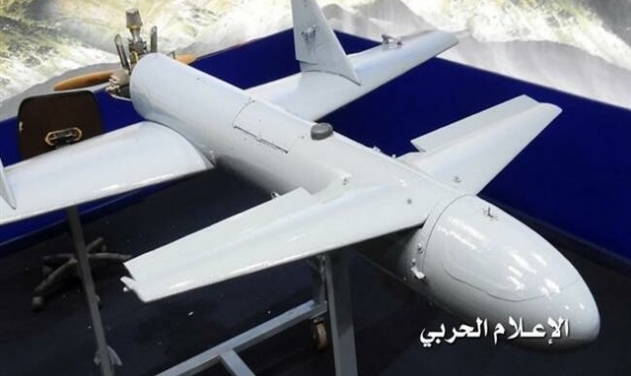Yemeni Army used Electronic Warfare, Jet-powered Drones in Saudi Attack

The Yemeni Armed Forces (YAF)’ attacks against Saudi Arabian Oil facilities in Abqaiq and Khurais were launched from three locations using multiple type drones including one that suppressed enemy electronic detection ability.
Giving details of the attack it calls as “Second Deterrent Balance Operation,” YAF spokesperson Brigadier General Yahya Saree told journalists in the Yemeni capital Sana’a on Wednesday that the drones involved in last week’s attack included third generation domestically-made Qasef (Striker), long-endurance Sammad-3 (Invincible-3) drones with a range of 1,500 - 1,700 kilometers and newly-developed drones equipped with jet engines.
Saree said that various combat drones were launched from three different locations according to their flight endurance and designated targets. The sites and flight paths were selected after a carefully planned intelligence operation.
Referring to the new jet-engine powered drones, Saree said each of the new drones can carry four precision-guided bombs with fissionable heads every time, and can monitor and hit their targets from several angles.
“Other aircraft were also used so the main combat drones could hide in their shadow without being detected, and signal jamming devices effectively disabled the enemy’s air missile defense systems,” he said.
Saree highlighted that aerial photographs taken by Yemeni reconnaissance drones in the aftermath of the operation show the extent of damage to be far greater than that shown in images released by Saudi Arabia and the United States.
“The destruction of the targeted facilities is far greater than what has been announced. Americans sought to publish fabricated pictures of the operation aftermath as part of attempts to downplay it. The blaze lasted for several hours and authorities in the ‘state of aggression’ (Saudi Arabia) could not contain it,” the YAF spokesperson pointed out.
Rejecting claims of Iranian support to the YAF’s drone program, he said, “Our forces have reached a high level of efficiency and ability. They can manufacture various types of unmanned aerial vehicles in record time. The Second Deterrent Balance Operation which targeted Saudi oil installations, is a perfect example of the capabilities of our forces in terms of planning and implementation.
Saree highlighted that aerial photographs, taken by Yemeni reconnaissance drones in the wake and aftermath of the operation, show the extent of damage caused on the two major oil facilities in Saudi Arabia, stating that it was launched following a careful intelligence collection process.
“The destruction of the targeted facilities is far greater than what has been announced. Americans sought to publish fabricated pictures of the operation aftermath as part of attempts to downplay it. The blaze lasted for several hours and authorities in the state of aggression (Saudi Arabia) could not contain it,” the high-ranking Yemeni military official pointed out.

Warning the United Arab Emirates, a part of the Saudi-led coalition fighting the YAF, that it was next on its target list, Saree said, “We hereby announce that dozens of targets in the UAE, namely in Abu Dhabi and Dubai, are within our range. We urge the aggressors to stay away from Yemen if security and safety of their infrastructure and glass towers matter to them.”
Saudi Arabia led a regional coalition that launched a devastating campaign against Yemen in March 2015 to bring former president Abd Rabbuh Mansur Hadi back to power after the popular Houthi Ansarullah movement seized power. Some 100,000 Yemeni civilians have been killed and infrastructure destroyed in indiscriminate bombings since then.









